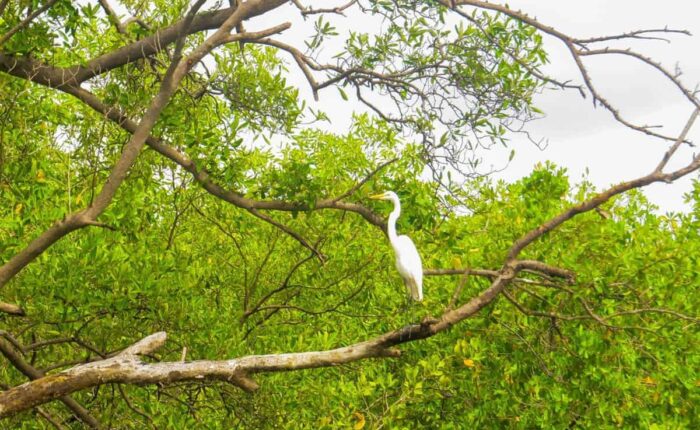Bottlenose dolphins are extremely intelligent, studies are shown that dolphins may be taught to use artificial language and tools and that they transmit their knowledge from one generation to the next. If not harmed by human activity dolphins live very long lives.
Enjoy viewing a huge variety of mangroves forests, birds, and other local wildlife in their natural environment. Our boat lets you get up close to the animals with plenty of opportunities to take amazing photos as we cruise around this nature lover’s paradise.
Gulf of Montijo offers a unique opportunity to enjoy marine life at its best and will be your greatest wildlife experience during your stay in Panama, cruising intra-costal waterway surrounding mangroves forests. It is a perfect excursion for all ages and private small groups.
Panama Dolphin Watching – Wild Experience
Cetaceans tend to prefer wild and pristine habitats, and dolphins around these shores are no different, Gulf of Montijo is an 89 thousand ha. of RAMSAR site, which represents 11% of Panama’s wetlands, close to Coiba National Park that is a marine reserve with 270,125 ha of which 216,500 ha are marine and 53,625 ha. are insular and include Coiba Island along with 38 smaller islands, were declared UNESCO World Heritage site in 2005.

One of the main attractions of the Gulf of Montijo is the possibility of having a close encounter with free-swimming dolphins directly in their habitat and not in captivity, as these animals are particularly abundant in the coastal waters of Panama. The most common encounter is with a semi-resident population of bottlenose dolphins (known as “Flipper”) and outside on the shore near Cebaco Island we have a chance to observe spotted dolphins and Humpback Whales (season from June to October) in the wilderness.
Ecotourism in Panama
We start the Eco-Tour very early, sometimes before sunrise, but who’s complaining when you’re cruise along the beautiful Gulf of Montijo coastline, it is hard to describe your emotions will be full to bursting with that first glimpse of a dolphin fin cutting through the water or when a mother and baby leap through the air.
On a dolphin-watching tour, you might get lucky and see specimens jumping or flashing their tails or fins out of the water, blowing water into the air, or perhaps you will be close enough to listen to the water being blown out by a dolphin. Many of them swim with our boat side by side as if they’re racing with us, or slide on the backwash as if they’re enjoying surfing! this is a perfect moment for a priceless photo.
Conservation efforts have been put in place to ensure the dolphins’ safety and continual wellbeing, we have self-regulation policies for whale-watching activities that are very effective in guaranteeing an appropriate interaction with the animals and ensuring they don’t run away from the area if too harassed.
Our main mission is to educate people about the mangrove & marine ecosystems and the need for their conservation.
Dolphins are Cetaceans
Did you know…
Dolphins call each other by ‘name’ using individual signature whistles, that the mother gives at birth?
In our tours there is always time for good food, we invite you to make a stop on Leones Island, to taste Don Pedro’s famous seafood platter, which includes Lobster, fried fish, fried plantains, coconut rice, and black seashells.










